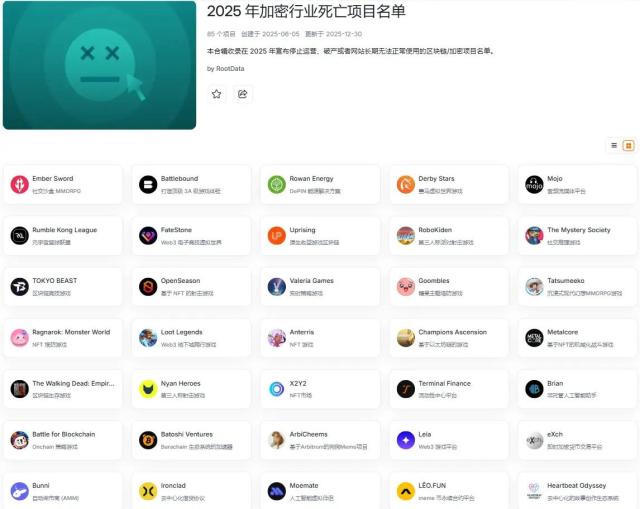 In the past year, the primary market of the crypto industry has been sluggish, almost reverting to pre-liberation times. In this "bear market", various human nature and "decentralization" regulatory loopholes have been fully exposed. Market makers should have been "helpers" for new projects, providing liquidity and stabilizing prices to help projects gain a foothold. However, a cooperation model called "loan option model" that was widely accepted during bull markets is now being abused by some unscrupulous actors in bear markets, quietly harming small crypto projects and causing trust collapse and market chaos. Traditional financial markets have encountered similar issues, but they have minimized damage through mature regulation and transparent mechanisms. In my opinion, the crypto industry can definitely learn from traditional finance to resolve these irregularities and create a relatively fair ecosystem. This article will delve into the operation of loan option models, how they dig pits for projects, comparisons with traditional markets, and current situation discussions.
In the past year, the primary market of the crypto industry has been sluggish, almost reverting to pre-liberation times. In this "bear market", various human nature and "decentralization" regulatory loopholes have been fully exposed. Market makers should have been "helpers" for new projects, providing liquidity and stabilizing prices to help projects gain a foothold. However, a cooperation model called "loan option model" that was widely accepted during bull markets is now being abused by some unscrupulous actors in bear markets, quietly harming small crypto projects and causing trust collapse and market chaos. Traditional financial markets have encountered similar issues, but they have minimized damage through mature regulation and transparent mechanisms. In my opinion, the crypto industry can definitely learn from traditional finance to resolve these irregularities and create a relatively fair ecosystem. This article will delve into the operation of loan option models, how they dig pits for projects, comparisons with traditional markets, and current situation discussions.
I. Loan Option Model: Sounds Good, Actually Risky
In the crypto market, market makers' task is to ensure sufficient trading volume and price stability through frequent token buying and selling. For emerging projects, finding a market maker partner is almost mandatory - otherwise, it's difficult to get listed on exchanges and attract investors. The "loan option model" is a common cooperation method: project teams lend a large number of tokens to market makers, usually for free or at very low cost; market makers use these tokens to "make market" on exchanges, maintaining market activity. Contracts often include an option clause allowing market makers to return tokens at a certain price point in the future or simply buy them, with the flexibility to choose not to do so.
It sounds like a win-win deal: project teams get market support, and market makers earn trading spreads or service fees. However, the problem lies in the "flexibility" of the option clause and contract opacity. Information asymmetry between project teams and market makers provides opportunities for some dishonest market makers to exploit loopholes. Instead of helping the project, they use borrowed tokens to disrupt the market, prioritizing their own profits.
II. Predatory Behavior: How Projects Get Trapped
If the loan option model is abused, it can truly harm projects severely. The most common tactic is "dumping": market makers flood the market with borrowed tokens, instantly driving prices down. When retail investors see something's wrong, they start selling, causing market-wide panic. Market makers can profit, for instance, through "short" trading - selling tokens at high prices, then buying back at lower prices after the crash to return to the project team, pocketing the difference. Alternatively, they can use option clauses to return tokens at the lowest price point, at an incredibly low cost.
This approach is devastating for small projects. We've seen numerous cases where token prices halve within days, market value evaporates instantly, and further fundraising becomes nearly impossible. Worse, a crypto project's lifeline is community trust. Once prices crash, investors either perceive the project as a "scam" or completely lose confidence, causing community disintegration. Exchanges have requirements for token trading volume and price stability; price crashes can directly lead to delisting, essentially "killing" the project.
Adding insult to injury, these cooperation agreements are often hidden behind non-disclosure agreements (NDAs), with details invisible to outsiders. Project teams, typically technical newcomers, have weak awareness of financial market and contract risks. Facing experienced market makers, they're completely led by the nose, unaware of the "trap" they're signing into. This information asymmetry makes small projects easy prey for predatory behavior.
[Translation continues in the same manner for the remaining sections]- Strict Regulation: In the United States, the Securities and Exchange Commission (SEC) has a "Rule SHO" that requires ensuring stocks can actually be borrowed before short selling to prevent "naked short selling". There's also an "uptick rule" that only allows short selling when stock prices rise, limiting malicious price suppression. Market manipulation is strictly prohibited, and violations of Section 10b-5 of the Securities Exchange Act can result in massive fines or even imprisonment. The European Union also has a similar Market Abuse Regulation (MAR) specifically targeting price manipulation.
- Information Transparency: Traditional markets require listed companies to report agreements with market makers to regulatory bodies, with trading data (prices, transaction volumes) publicly accessible, which even retail investors can view through Bloomberg terminals. Any large transactions must be reported to prevent secret "market dumping". This transparency prevents market makers from acting recklessly.
- Real-time Monitoring: Exchanges use algorithms to monitor markets, detecting abnormal fluctuations or trading volumes. For instance, if a stock suddenly plummets, an investigation is triggered. Circuit breaker mechanisms are also useful, automatically suspending trading when price volatility is too high, giving the market a chance to breathe and preventing panic from spreading.
- Industry Standards: Organizations like the Financial Industry Regulatory Authority (FINRA) in the United States have established ethical standards for market makers, requiring them to provide fair quotes and maintain market stability. Designated Market Makers (DMM) on the New York Stock Exchange must meet strict capital and behavioral requirements, or they cannot operate.
- Investor Protection: If market makers disrupt the market, investors can pursue collective legal action. After 2008, many banks were sued by shareholders for market manipulation. The Securities Investor Protection Corporation (SIPC) also provides certain compensation for losses caused by broker misconduct.
While these measures are not perfect, they have significantly reduced predatory behaviors in traditional markets. I believe the core experience of traditional markets is combining regulation, transparency, and accountability to create a multi-layered protective network.
V. Why is the Crypto Market So Vulnerable?
I believe the crypto market is much more fragile than traditional markets, for several main reasons:
Immature Regulation: Traditional markets have hundreds of years of regulatory experience with a well-established legal system. In contrast, global crypto regulation is like a puzzle, with many areas lacking clear regulations on market manipulation or market makers, making it easy for bad actors to operate.
Small Market: The market capitalization and liquidity of cryptocurrencies are far behind US stocks. A single market maker can dramatically change a token's price, which is impossible with large-cap stocks in traditional markets.
Inexperienced Project Teams: Many crypto project teams are technical geeks with no understanding of finance. They might not even be aware of the pitfalls in loan option models and can be easily misled when signing contracts with market makers.
Culture of Non-transparency: The crypto market loves using confidentiality agreements, hiding contract details. In traditional markets, such secrecy would have been scrutinized by regulators, but it's the norm in the crypto world.
These factors combined make small projects easy targets for predatory behaviors, gradually eroding the industry's trust and healthy ecosystem.








